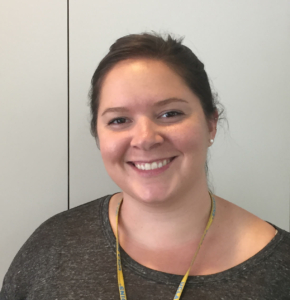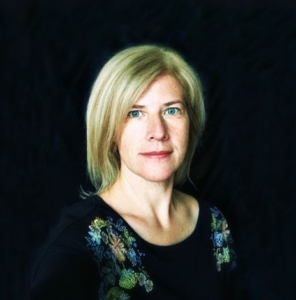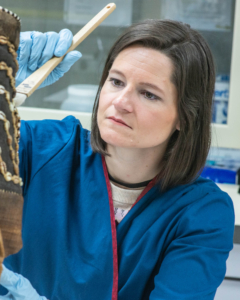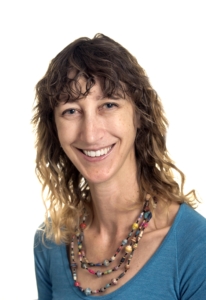Alumni Spotlight

Morgan Burgess, Class of ’18
Morgan Burgess, Class of ’18
Andrew W. Mellon Fellow, National Museum of American History, Washington, D.C.
Morgan Burgess is a second year Mellon Fellow in Objects Conservation at the National Museum of the American Indian where her research focuses on characterizing past and undocumented restoration materials. She was previously a Kress fellow at the National Museum of American History and completed her conservation graduate internship at the Museum of Fine Arts, Houston. She has previous internship experience at the Penn Museum, the Harry Ransom Center at the UT Austin, the Fowler Museum at UCLA, the Upper Sabina Tiberina Archaeological Project, and the Mugello Valley Archaeological Project: Poggio Colla Field School. She holds an MA from the University of California Los Angeles in the Conservation of Archaeological and Ethnographic Materials and a BA in Classics from Franklin & Marshall College where she minored in Studio Art. Morgan’s specific research interests are in the conservation of composite/multimedia objects, and ancient/historic production methods and technology and how these can inform our approaches to conservation treatment.
Why did you choose the UCLA/Getty conservation program?
I chose UCLA/Getty because of the emphasis on archaeological materials. My undergraduate
degree is in Classical Archaeology & Ancient History and my first experiences in conservation were working on an excavation and then working in a lab at an archaeological museum.
Can you describe your post-graduation experience?
Post-graduation I was a Samuel H. Kress fellow at the National Museum of American History. I
worked on a project that focused on the recording devices from the Early Sound Collection.
Additionally, I encountered new materials and collections challenges while working on some
other projects for the Medicine & Science and the Entertaining & Arts collections. I am currently a second year Andrew W. Mellon fellow at the National Museum of the American Indian and my research focuses on characterizing past restoration materials for a specific collection of objects that were excavated in the early 20th century and were conserved/restored prior to being sold to museum collectors.
Elizabeth Chayes, Class of ’08 Liz Chayes is a professional objects conservator who has been working in the field for over 20 years. She earned a B.F.A. (dual degree) in film and photography at Massachusetts College of Art, Boston and earned a M.F.A. from the UCLA/Getty Conservation Program, Los Angeles. She has worked on numerous museum conservation and field projects around the globe including Africa, Australia and Great Britain. She is a Professional member of The American Institute Of Conservation as well as The Los Angeles Art Association and The Los Angeles Center of Photography. What did you enjoy most about being a UCLA/Getty graduate student? The UCLA/Getty Program creates a space that attracts people from all over the world with the same mutual calling. I made lifelong friendships with my peers in the program. We are still a pretty tight knit group even though we’re spread out across the globe now. It’s been wonderful to see how each one of us has grown and evolved with our own unique interests. Do you have any advice or insight for prospective students? The students coming into the program are amazingly talented and may be giving me advice in a few years. I would say working in conservation over the past twenty years has at times been a vocation, a job, a passion and a career, but I’ve never lost sight of what a privilege it is. Every project has always broadened my perspective and taught me a great deal. Oh, I thought of something, maybe enjoy those amazing Getty views from the lab! Brittany Dolph Dinneen, Class of ’14 Brittany Dolph Dinneen is assistant conservator of objects at the Michael C. Carlos Museum, Emory University, and a professional associate of AIC. She is also a senior member of the conservation team for the American Excavations Samothrace in Greece. She has enjoyed conservation roles at the Smithsonian National Museum of African Art and National Museum of American History, the Kelsey Museum of Archaeology, and the National Gallery of Art. Additionally, she has done archaeological conservation work for the Naxçivan Archaeological Project in Şərur, Azerbaijan; the ‘Ayn Gharandal Archaeological Project in Wadi Araba, Jordan; the Ancient Methone Archaeological Project in Makrygialos, Greece; and the Theatre of Demetrias in Volos, Greece. Her research interests include the application of handheld x-ray fluorescence spectrometry in investigations of cultural heritage materials, the characterization of accumulative surfaces on African power objects, the use of agarose gel in conservation desalination approaches, and innovative approaches to preventive conservation. She received her MA from the UCLA/Getty Program in Conservation of Archaeological and Ethnographic Materials in 2014, following a BA in Anthropology/Archaeology from the University at Buffalo in 2006. What did you enjoy most about being a UCLA/Getty graduate student? The things I enjoyed about being a UCLA/Getty student were many, and hard to narrow down! I appreciated the encouragement to develop independent interests by seeking out a broad array of experiences, rather than a proscribed one-fits-all track. I enjoyed learning about the diversity of technology and materials used in making art and utilitarian objects from across the human experience, geographically and temporally. I felt like I had good guidance in navigating ethical decision-making when working on unfamiliar material culture. I loved that we had access to objects in archaeological and ethnographic as well as fine arts collections for independent studies and research. While I don’t know if I knew it at the time, in hindsight, the balance of object-specific training with preventive care of collections was incredibly crucial, given the ever-changing dynamics of funding and the struggle of having to distribute limited labor and financial resources across entire museum collections. I really appreciated that we were introduced to traditional conservation materials and methods, but given a foundation of scientific knowledge to consider, explore, and research new solutions. I valued the range in professional background and expertise brought by our professors. But perhaps what I enjoyed most was my fantastic cohort! I was so buoyed by our relationships through the stress of graduate work. Their unique combination of backgrounds means that you have the chance to learn so much more through them vicariously. Why did you choose the UCLA/Getty conservation program? Interdisciplinary scholarship seemed to be one of the ways in which UCLA/Getty inherently excelled when I was applying to graduate school, and one of the first things that attracted me to the program. The central tenet that pursuing the cultural, artistic, historic and range of other values of an object within its context should play an integral role in any plan of treatment was also important for me. I liked that there was access to analytical equipment available between the Cotsen Institute, UCLA Department of Materials Science and Engineering, the Getty Villa, GCI, and other partner institutions. Overall, the broad array of materials that are used in archaeological and contemporary cultural object manufacture demand a combined reliance on cultural value and scientific analysis in problem solving, and I especially appreciated this aspect of UCLA’s program. Do you have any advice or insight for prospective students? My advice for prospective students is to take calculated risks. Be open to opportunities that allow you to build your skills or knowledge, even if they aren’t something you might have been attracted to originally, or that constitutes a traditional internship. Extract the things from your current and past jobs or other unique experiences that are applicable to conservation – not just hand skills, but problem-solving, materials research, monitoring environments, photography, etc. – and be able to explain why they help prepare you for a career in conservation. It is hard to keep the big picture in mind when you’re focused on the details of checking boxes for applications but remember why you started in the first place. And don’t be afraid to step away and see where a new path leads you; so many skills are transferrable to a variety of career paths. Molly Gleeson, Class of ’08 Molly Gleeson is the Schwartz Project Conservator at the Penn Museum, located at the University of Pennsylvania in Philadelphia, PA. Molly is currently a lead project conservator for the Penn Museum‘s Ancient Egypt and Nubia Galleries project. Molly also regularly works in the Penn Museum’s visible conservation lab (the Artifact Lab) where she treats artifacts in full public view, interacts with museum visitors daily, and blogs about the work in the lab. Molly graduated from the UCLA/Getty Master’s Program in 2008. She received her B.A. in art conservation from the University of Delaware in 2002. Molly is a Professional Associate member of the American Institute for Conservation (AIC) and has served as the AIC Board Director for Professional Education since 2017. In her role she works closely with AIC’s Emerging Conservation Professionals Network (ECPN), the Education and Training Committee (ETC), and the Equity and Inclusion Committee (EIC). Here is a link to the Penn Museum website: What did you enjoy most about being a UCLA/Getty graduate student? I always felt so lucky to be a part of 2 different communities with such beautiful campuses. While we were most often at the Villa, I also tried to spend as much time as possible at the Getty Center and at UCLA, and to really take advantage of all their amazing resources. Do you have any advice or insight for prospective students? Enjoy your time in LA, get out and see as much of southern California as possible, treasure your time as a student despite all the work, and that includes the time that you have with your classmates and professors. Jiafang Liang, Class of ’10 Ms. Jiafang Liang starts her PhD at the University of Hong Kong in Information Science in fall 2020. What did you enjoy most about being a UCLA/Getty graduate student? I feel I was fully supported by the program and the professionals from UCLA, the Getty Villa and the Getty Centre. No matter from the lab facilities, intellectual support to internship application, our program helped me the best to engage in conservation field. What has your experience been post-graduation? What positions have you held? I worked in different institutions after I graduated. I was a Kress conservation fellow in the Nelson Atkins Museum of Art from 2010-2011. Then I moved to China to work as an archaeological conservator in Shaanxi Academy of Archaeology for 6 years. After then, I moved to Hong Kong, worked as a research associate in the Architectural Conservation Program in HKU until this summer 2020. My role shifts from treating individual objects to introduce students in Hong Kong to objects conservation and conservation science. Do you have any advice or insight for prospective students? No matter how busy you are, you have to go to the gym in UCLA campus; No matter how deep you dive in the library, you have to take a walk in the Villa. Because once you leave there, you won’t have a chance to do it again. Enjoy your 3-year graduate school in UCLA/Getty Conservation Program, it brings you much more than you thought.
Elizabeth Chayes, Class of ’08

Brittany Dolph Dinneen, Class of ’14

Molly Gleeson, Class of ’08
www.penn.museum

Jiafang Liang, Class of ’10
Her PhD research proposes to apply data science to a novel area of inquiry in archaeology: the analysis of the raw materials of archaeological ceramics from a field project in Armenia
(http://openarchaeology.org/armenia/index). Liang worked at the Architectural Conservation Laboratory in the Division of Architectural Conservation Programmes at HKU from June 2018 to June
2020 where she conducted forensic studies of bronzes from a private collection and condition assessment to the new ceramic acquisitions in the University Museum and Art Gallery in HKU. Liang is an accredited Associate Research Fellow in China (by the Ministry of Human Resources and Social Security) during the time as an archaeological conservator at the Shaanxi Academy of Archaeology, Xi’an, China, focusing on conservation and technical study of unearthed bronzes and polychrome ceramics from 2011-2017. Liang graduated from UCLA/Getty Conservation Program in 2010, where her thesis research is about a technical study on green waxy paint found on an Egyptian artefact. So far, Liang has published 11 peer-reviewed papers as the first author on technical studies and conservation of archaeological artifacts.

